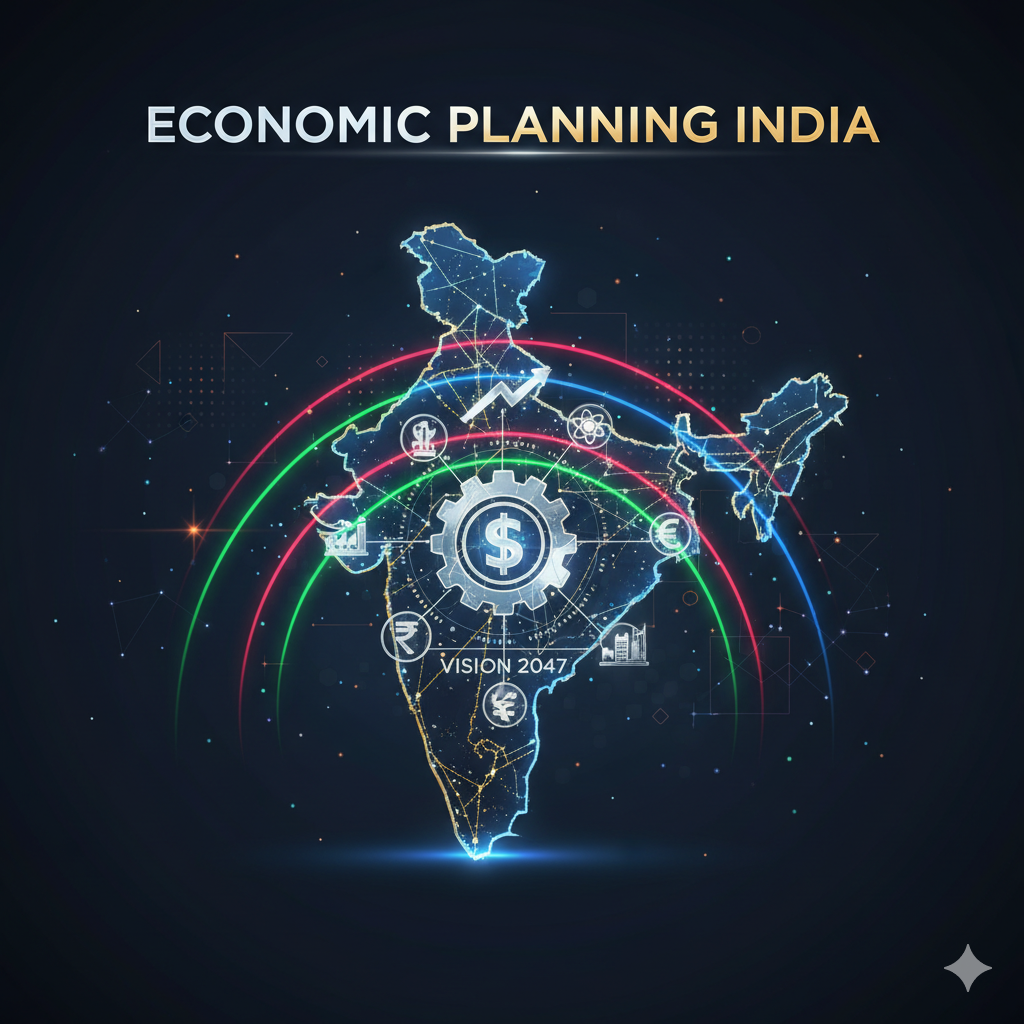Introduction
Employment generation remains a central concern for India’s economic growth. Despite rapid GDP growth, India faces challenges of unemployment, underemployment, and regional economic disparities. According to the Periodic Labour Force Survey (PLFS) 2021–22, the unemployment rate in India was around 7–8%, with rural areas facing disguised unemployment in agriculture and urban areas struggling with a shortage of formal sector jobs.
One proposed strategy to address both employment generation and regional development is Regional Resource-Based Manufacturing (RRBM). This approach advocates developing industries in regions based on their local resources—natural, human, or technological—to create jobs, reduce migration pressures, and ensure balanced economic growth.
This essay explores the concept of RRBM, its relevance in India, the employment potential, challenges, and policy measures required to make it an effective tool for sustainable job creation.
1. Understanding Regional Resource-Based Manufacturing (RRBM)
1.1 Definition
Regional Resource-Based Manufacturing (RRBM) refers to industrial development that is strategically aligned with the resources available in a particular geographic region. These resources can include:
- Natural Resources: Minerals, forest products, agricultural produce, water bodies, coastal zones.
- Human Resources: Skilled or semi-skilled labor, traditional artisan skills, local knowledge systems.
- Technological Resources: Local technological capabilities or innovation clusters.
The strategy emphasizes local resource utilization, value addition, and linkages to regional economies, ensuring that industrial benefits are widely distributed.
1.2 Key Principles of RRBM
- Resource Endowment Alignment: Industries should be chosen based on available resources.
- Value Addition Locally: Raw resources should be processed within the region instead of exporting raw materials.
- Inclusive Employment Generation: Focus on creating jobs for both skilled and unskilled labor.
- Regional Equity: Promote economic development in underdeveloped areas to reduce inter-regional disparities.
- Sustainability: Encourage eco-friendly practices and minimal environmental degradation.
2. Relevance of RRBM in India
India exhibits diverse resource endowments across states and regions. This diversity creates a strong case for resource-based manufacturing as a mechanism for employment generation.
2.1 Regional Resource Distribution
- Agricultural Resources: Punjab, Haryana, and Uttar Pradesh produce wheat and rice; Gujarat, Maharashtra, and Tamil Nadu excel in cash crops and horticulture.
- Mineral Resources: Jharkhand, Odisha, Chhattisgarh, and Karnataka are rich in iron, coal, and bauxite.
- Forest Resources: Madhya Pradesh, Arunachal Pradesh, and Chhattisgarh have abundant timber, bamboo, and NTFPs (Non-Timber Forest Products).
- Water and Fisheries: Kerala, West Bengal, and Andhra Pradesh have strong potential in aquaculture and fisheries-based manufacturing.
- Human Resources: States like Tamil Nadu and Karnataka have IT-skilled labor; traditional artisan skills thrive in Rajasthan, Gujarat, and Uttar Pradesh.
2.2 Importance in Employment Generation
- Provides direct employment in manufacturing units.
- Generates indirect employment in logistics, marketing, ancillary industries, and services.
- Reduces rural-urban migration by creating local job opportunities.
- Supports small and medium enterprises (SMEs) and cottage industries.
3. Potential Sectors for Resource-Based Manufacturing in India
3.1 Agro-Based Industries
- Processing of cereals, fruits, vegetables, and spices.
- Example: Punjab and Haryana—Rice and wheat mills; Kerala—Coconut-based industries.
- Employment: Rural youth can be employed in food processing, packaging, storage, and distribution.
3.2 Mineral-Based Industries
- Steel, aluminum, cement, and ferroalloy manufacturing.
- Example: Odisha—Iron and steel plants (Rourkela Steel Plant), Chhattisgarh—Bauxite and aluminum industries.
- Employment: Both skilled and semi-skilled labor can be employed in extraction, smelting, and ancillary services.
3.3 Forest-Based and Non-Timber Forest Products (NTFP) Industries
- Bamboo-based furniture, paper, handicrafts, essential oils.
- Example: North-East India—Bamboo and cane-based industries; Madhya Pradesh—Timber-based industries.
- Employment: Women and tribal communities gain direct and home-based employment.
3.4 Fisheries and Aquaculture-Based Manufacturing
- Fish processing, canning, frozen seafood, fish oil extraction.
- Example: Andhra Pradesh, Tamil Nadu, West Bengal.
- Employment: Coastal communities benefit directly; supports transportation, cold storage, and export logistics.
3.5 Traditional and Handicraft Industries
- Textile weaving, pottery, carpet making, leather goods, jewelry.
- Example: Rajasthan—Handicrafts; Uttar Pradesh—Carpets and brassware.
- Employment: Provides employment to artisans, especially women and marginalized groups.
3.6 Renewable Energy-Based Manufacturing
- Solar panel assembly, wind turbine parts, biomass energy units.
- Example: Gujarat—Solar energy manufacturing hubs; Tamil Nadu—Wind energy component industries.
- Employment: Skilled labor in manufacturing, assembly, and maintenance.
4. Mechanisms Through Which RRBM Promotes Employment
4.1 Labor-Intensive Manufacturing
- Resource-based industries often require substantial human labor.
- Agro-processing, handicrafts, bamboo and timber processing are highly labor-intensive, providing direct jobs to rural and semi-urban populations.
4.2 Development of Ancillary Industries
- Raw material processing creates backward linkages—logistics, packaging, storage, machinery maintenance.
- Forward linkages in marketing, exports, and retail also generate employment.
4.3 Encouraging Entrepreneurship
- Local resource utilization promotes micro and small enterprises.
- Example: Women’s cooperatives in Kerala’s coir industry provide employment and entrepreneurial opportunities.
4.4 Regional Balanced Development
- Investment in resource-based industries in backward regions reduces urban migration pressure, indirectly creating urban employment relief.
- Example: Industrial projects in Jharkhand and Chhattisgarh have started employing local tribal populations.
4.5 Skill Development and Training
- Establishment of regional industries necessitates skill training centers, vocational institutes, and apprenticeships.
- Example: Food processing clusters in Uttar Pradesh and Maharashtra have skill development programs for rural youth.
5. Case Studies Demonstrating Employment Potential
5.1 Agro-Processing in Punjab and Haryana
- Rice and wheat milling clusters provide thousands of rural jobs.
- Indirect employment through packaging, transport, and machinery servicing.
5.2 Mineral-Based Industries in Odisha and Chhattisgarh
- Rourkela Steel Plant employs thousands directly; small ancillary industries employ additional thousands.
- Tribal populations benefit through employment in mining and logistics.
5.3 Handicrafts in Rajasthan and Uttar Pradesh
- Carpet weaving in Bhadohi (UP) and textile crafts in Jaipur provide employment to women and marginalized communities.
- Export-oriented industries contribute to foreign exchange while generating local employment.
5.4 Fisheries-Based Manufacturing in Andhra Pradesh
- Fish processing units in Visakhapatnam employ thousands of coastal workers.
- Cold chain logistics and transportation sectors benefit indirectly.
5.5 Bamboo and Forest-Based Industries in North-East India
- Bamboo furniture and paper mills provide employment to tribal communities.
- Encourages sustainable forest management while improving income levels.
6. Challenges in Implementing RRBM in India
6.1 Infrastructure Deficiency
- Many resource-rich regions lack transportation, electricity, water, and storage infrastructure.
6.2 Skill Gap
- Labor may lack the skills required for modern manufacturing processes.
6.3 Market Access
- Resource-based products from remote areas may struggle to reach national and global markets.
6.4 Environmental Concerns
- Unsustainable exploitation of resources can lead to ecological degradation.
- Example: Over-mining in Odisha or overfishing in coastal areas.
6.5 Policy and Institutional Challenges
- Fragmented policies and bureaucratic delays can hinder industrial development.
7. Policy Recommendations for Effective RRBM
7.1 Infrastructure Development
- Build roads, electricity, ports, and cold storage near resource clusters.
- Government subsidies for setting up industries in backward regions.
7.2 Skill Development Programs
- Vocational training centers and apprenticeships aligned with regional industries.
- Encourage youth and women participation.
7.3 Incentives and Support Schemes
- Tax incentives, low-interest loans, and subsidies for small and medium enterprises (SMEs).
- Promotion of cluster-based development to reduce costs and increase efficiency.
7.4 Sustainable Resource Management
- Encourage eco-friendly extraction, renewable energy usage, and waste management.
7.5 Market Linkages and E-Commerce Promotion
- Digital platforms to connect local producers with global markets.
- Branding of regional specialties (like “Bhadohi Carpets” or “Kerala Coir Products”) to increase demand.
7.6 Policy Integration
- Integrate RRBM strategy with Make in India, Atmanirbhar Bharat, Skill India, and MSME policies.
8. Advantages of RRBM Beyond Employment
- Regional Economic Development
- Reduces inter-state disparities by promoting industrial growth in underdeveloped areas.
- Reduces inter-state disparities by promoting industrial growth in underdeveloped areas.
- Reduction in Rural-Urban Migration
- Provides local employment, lowering pressure on urban infrastructure and housing.
- Provides local employment, lowering pressure on urban infrastructure and housing.
- Foreign Exchange Earnings
- Export-oriented resource-based industries increase India’s trade revenue.
- Export-oriented resource-based industries increase India’s trade revenue.
- Sustainable Development
- Promotes environmentally responsible use of local resources.
- Promotes environmentally responsible use of local resources.
- Empowerment of Marginalized Communities
- Tribal, rural, and women workforce participation enhances social equity.
9. Future Potential
With India’s demographic dividend and vast resource endowment, RRBM can play a critical role in the next phase of industrialization.
- By 2030, India may need to create 100–120 million additional jobs. RRBM can contribute significantly if integrated with technology, skill development, and sustainable practices.
- Emerging sectors like bio-processing, renewable energy, aquaculture, and specialty minerals offer high employment potential.
- Digital technologies and IoT integration in resource-based industries can enhance productivity and global competitiveness.
Conclusion
The strategy of Regional Resource-Based Manufacturing offers a viable pathway for employment generation in India. By aligning industrial development with local resources, India can achieve multiple objectives:
- Create direct and indirect employment opportunities.
- Promote inclusive and regional economic development.
- Reduce urban migration pressure.
- Enhance foreign exchange earnings and sustainability.
However, the success of RRBM depends on addressing challenges such as infrastructure deficits, skill gaps, environmental sustainability, and market access. A combination of policy support, technological integration, sustainable resource management, and community participation can make RRBM a cornerstone of India’s employment and industrial growth strategy.
In essence, resource-based manufacturing is not just an economic strategy but a social and developmental tool, capable of transforming India’s regional economies, empowering local populations, and building a more equitable and sustainable employment ecosystem.




